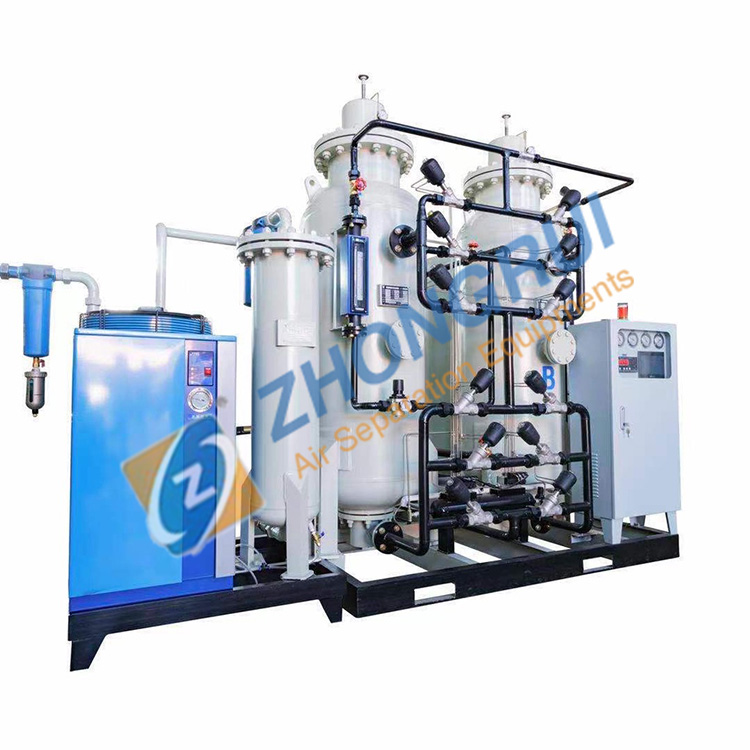News
How is nitrogen used in the welding process?
2022-12-14Nitrogen is extremely suitable as a protective gas, mainly because of its high cohesive energy. Only under high temperature and pressure (> 500C, >100bar) or with added energy can chemical reaction occur. At present, an effective method to produce nitrogen has been mastered. Nitrogen in the air accounts for about 78%, is an inexhaustible, inexhaustible, excellent economic protection gas. The field nitrogen machine, the field nitrogen equipment, causes the enterprise to use the nitrogen to be very convenient, the cost is also low!

Gas Nitrogen Generator has been used in reflow soldering before inert gas was used in wave soldering. This is partly because nitrogen has long been used in the hybrid IC industry for reflow soldering of ceramic mixers on their surfaces. When other companies saw the benefits of IC fabrication, they applied this principle to PCB soldering. In this welding, nitrogen also replaces the oxygen in the system. Gas Nitrogen Generator can be introduced into every zone, not only in the return zone, but also in the cooling process. Most reflow systems are now ready for Gas Nitrogen Generator; Some systems can be easily upgraded to use gas injection.
The use of Gas Nitrogen Generator in reflow welding has the following advantages:
· quick wetting of terminals and pads
· little variation in weldability
· improved appearance of flux residues and solder joint surfaces
· rapid cooling without copper oxidation
Nitrogen as a protective gas, the main role in the welding process is to remove oxygen, increase the weldability, prevent reoxidation. Reliable welding, in addition to the selection of the right solder, generally also need the cooperation of flux, flux is mainly to remove the oxide of the welding part of SMA components before welding and prevent the re-oxidation of the welding part, and form a good wetting condition of the solder, improve the solderability. The experiment proved that adding formic acid under the protection of nitrogen can play the above role. The machine body is mainly a tunnel-type welding processing slot, and the upper cover is composed of several pieces of glass that can be opened to ensure that oxygen cannot enter the processing slot. When nitrogen flows into the welding, it will automatically drive the air out of the welding area by using different specific gravity of shielding gas and air. During the welding process, the PCB will continuously bring oxygen into the welding area. Therefore, nitrogen should be continuously injected into the welding area to discharge oxygen to the outlet. Nitrogen plus formic acid technology is generally used in the tunnel type reflow welding furnace with infrared reinforcing force and convection mixture. The inlet and outlet are generally designed as open type, and there are multiple door curtains in the inside, which have good sealing property and can make the preheating, drying and reflow welding cooling of components all completed in the tunnel. In this mixed atmosphere, the solder paste used does not need to contain an activator, and there is no residue left on the PCB after soldering.Reduce oxidation, reduce the formation of welding ball, there is no bridge, it is very beneficial to the precision spacing device welding. Save cleaning equipment, protect the earth's environment. The additional cost due to nitrogen is easily recovered from the cost savings due to defect reduction and labor savings required.

Wave soldering and reflow welding under nitrogen protection will become the mainstream of surface assembly technology. The combination of cyclic nitrogen wave soldering machine and formic acid technology, and the combination of the extremely low activity solder paste and formic acid of the cyclic nitrogen reflow welding machine can remove and clean the process. Nowadays, in the rapid development of SMT welding technology, the main problem is how to get the pure surface of the base material and achieve reliable connection by breaking the oxide. Typically, a flux is used to remove the oxide and moisten the surface of the solder to reduce surface tension and prevent reoxidation. But at the same time, the flux will leave residues after welding, which will cause adverse effects on PCB components. Therefore, the circuit board must be thoroughly cleaned, and SMD small size, not welding gap is becoming smaller and smaller, thorough cleaning is impossible, more important is environmental protection. CFC has damage to the ozone layer of the atmosphere, as the main cleaning agent CFC must be banned. The effective way to solve the above problems is to adopt the no-cleaning technology in the field of electronic assembly. The addition of small and quantitative amounts of HCOOH formate to Gas Nitrogen Generator has been shown to be an effective no-cleaning technique without any cleaning after welding, without any side effects or concern for residues.


